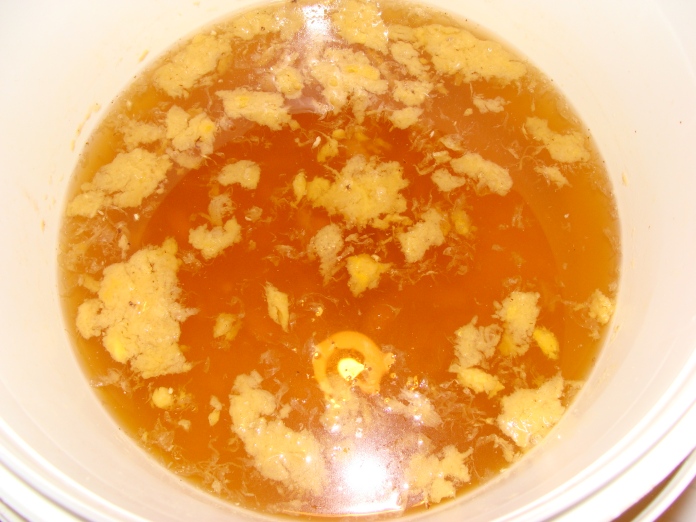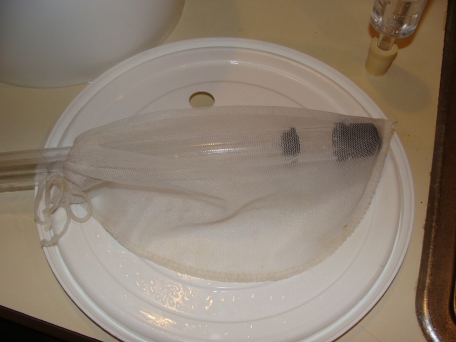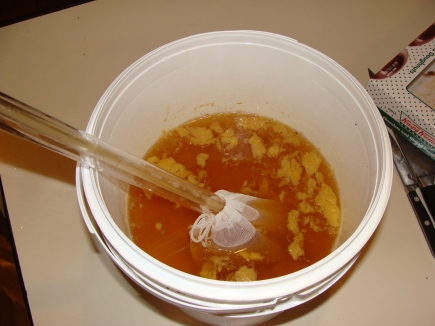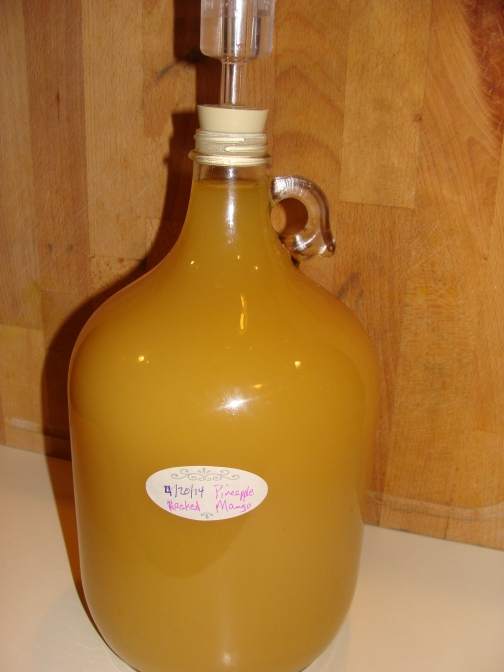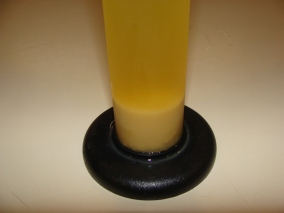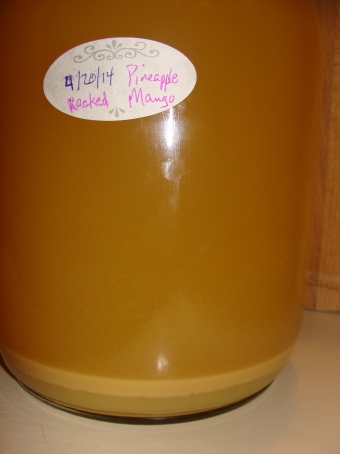
This is what I am experimenting with to see if I can grow a SCOBY. I am in no way affiliated with this brand of soda…but the root beer is interesting!
Kombucha…odd sounding. And when you hear the description, it’s gets kind of weird. So, you brew up some sweet tea, right? Okay, any good Southerner would be good with that. Then, you take something called a “SCOBY” (or affectionately referred to as the “mother”) and you chuck some of that in the tea. It looks like a slimey, spongy, white mass floating on the top of a previous batch of kombucha. SCOBY stands for “Symbiotic Culture Of Bacteria/Yeast”. Mmm MMM!!! So, then you cover with cheesecloth and a rubber band, let that ferment for a while, eating the sugar in the tea, and BOOM! You have a tangy, fermented tea drink with lots of healthy probiotics, like yogurt does, but even better! Are you still with me? Okay, then you start a new batch, throw your SCOBY in and put your Kombucha in clean jars in the fridge…or you can add a little more sugar and seal and let ferment at room temperature and you get kombucha soda! Here’s a Wikipedia link, if you want more information: http://en.wikipedia.org/wiki/Kombucha
Disclaimer! There are some risks with fermented products. Please read the Wikipedia article and, especially if you have any ongoing health issues or possible medication interactions, please, please consult your doctor before making and consuming any fermented products! And always sanitize the crap out of EVERYTHING! Constantly!!! Okay, moving along….
I have to admit, I’m not a big tea drinker. Never really cared for iced tea. But green tea is pretty mild and I like experimenting with fermented things, so here we go! I found a “LIVE Soda” at a store today. This brand is a “raw, organic, kombucha soda and comes in a few flavors. I decided to try a root beer flavor. The bottle instructs you to not shake…besides spewing all over you…it would disturb the dregs that have settled on the bottom of the bottle. That’s what I’m going to use to attempt to generate my own SCOBY. I have read that using a bottled product is not usually successful because of some change that was made in much of the industry a few years ago; however, this brand doesn’t seem to have any additives and its raw/organic status gives me hope. If it doesn’t work, I can go to my local home brew shop and pick up a starter for $8 and salvage my experiment.
What I did was, I brewed 8 teabags of green tea in 3 cups of Culligan bottled water from the “hot” side of my dispenser. (You could bring water to a boil for 10 minutes to sanitize, if you don’t have a hot water spigot/bottled water dispenser and then add your teabags). Next, I added a cup of sugar to a sanitized 1 gallon carboy. A wide mouth gallon jar would be better for removing the SCOBY, but I didn’t have one. Anyway, I poured the hot tea onto the sugar in the carboy and then topped up to a little under a gallon, leaving room for the mother to grow. The cold water brought the temperature down to about 90F (checked with a sanitized pocket thermometer). I put some ice in a mixing bowl and added some cold tap water and put the carboy in the bring the temperature down, so I wouldn’t kill off the SCOBY critters.
Then, I poured off about 2/3 of the LIVE Soda into a glass to drink…the rest was then swirled to suspend the dregs in the remaining soda, and poured into the tea. I topped the jar with a piece of sanitized cheesecloth and a rubber band and now we wait to see if it works.
It will probably be a month, give or take a week, to know if a SCOBY is going to form. If it does, the next batch should go faster.















